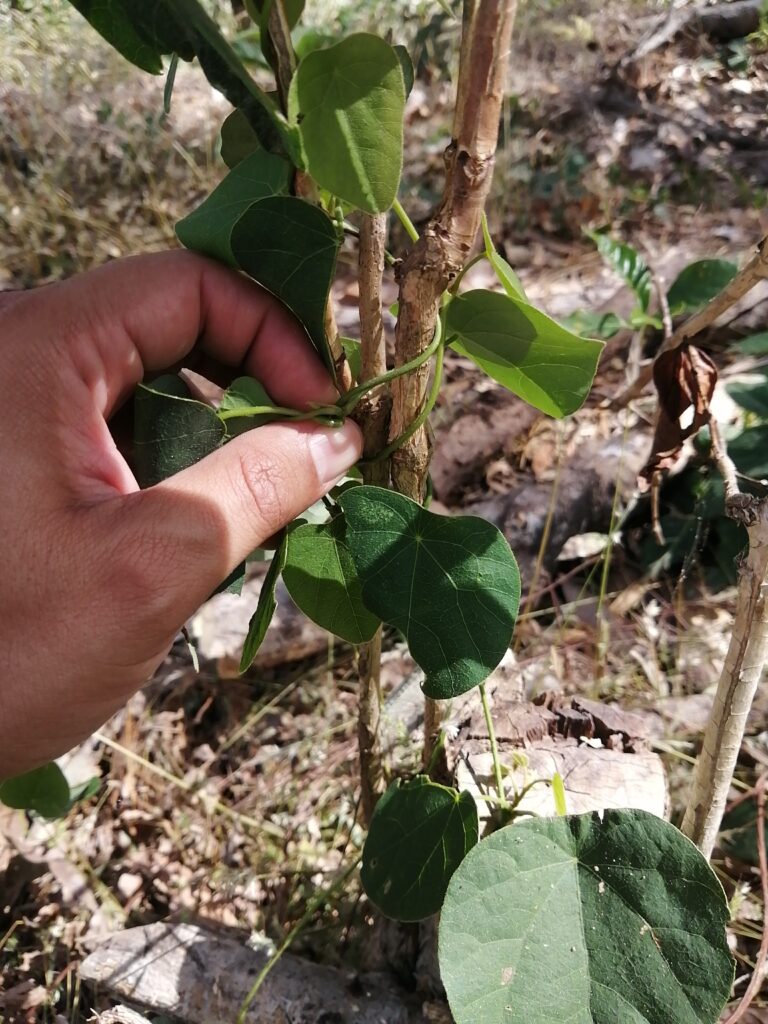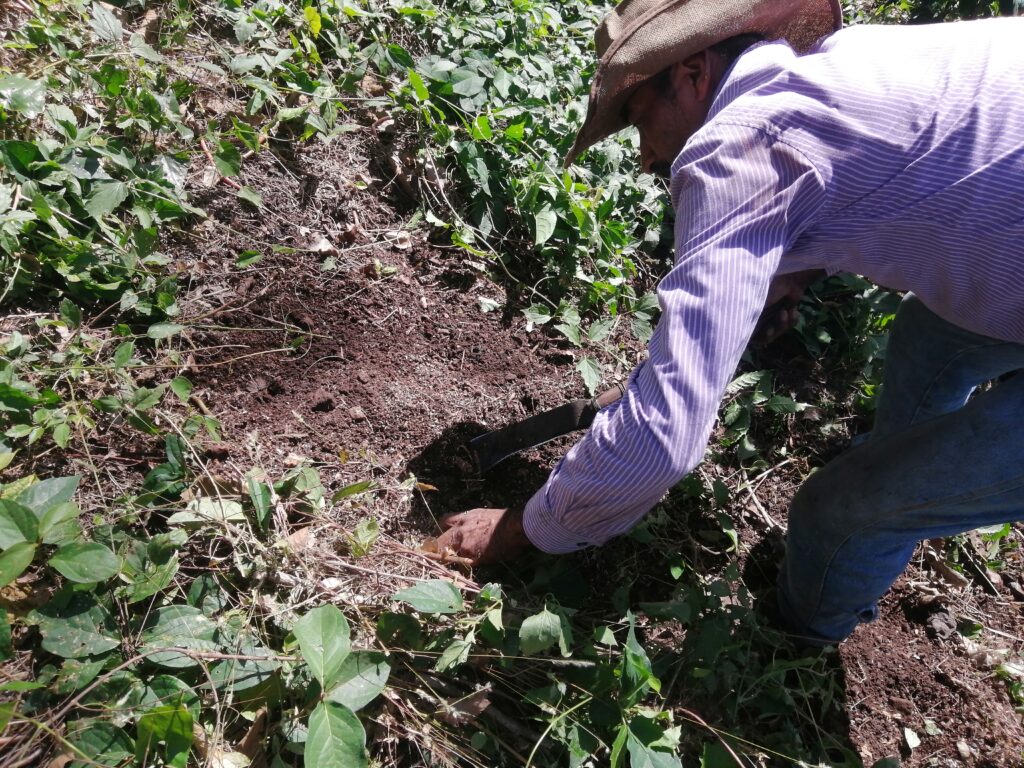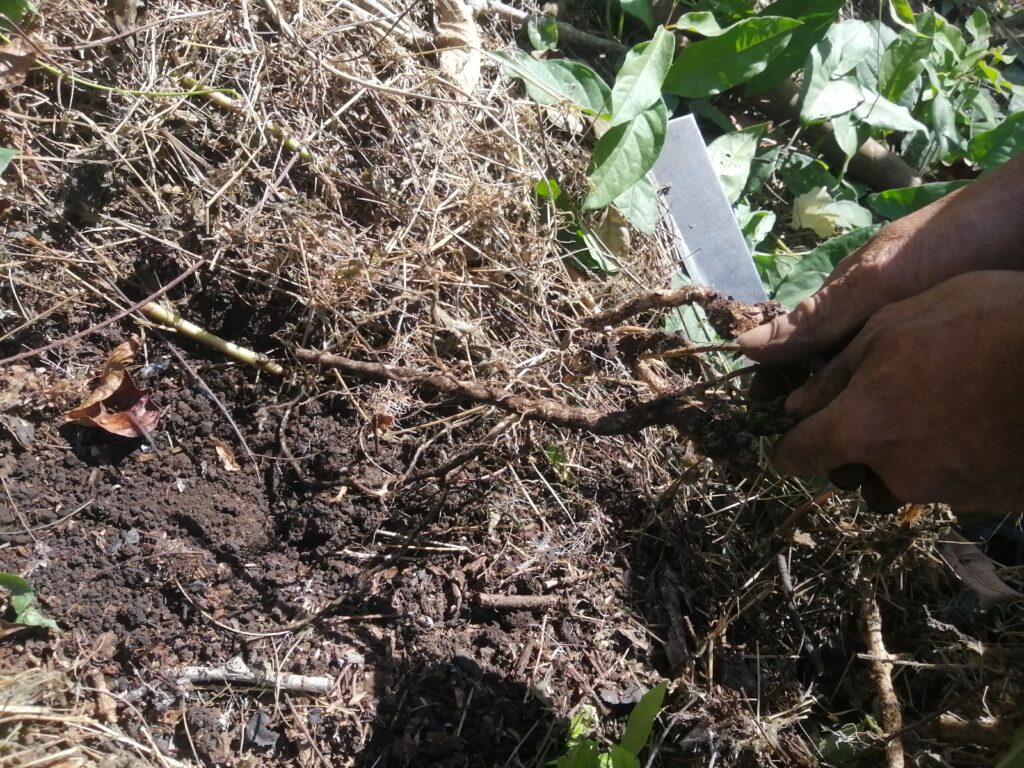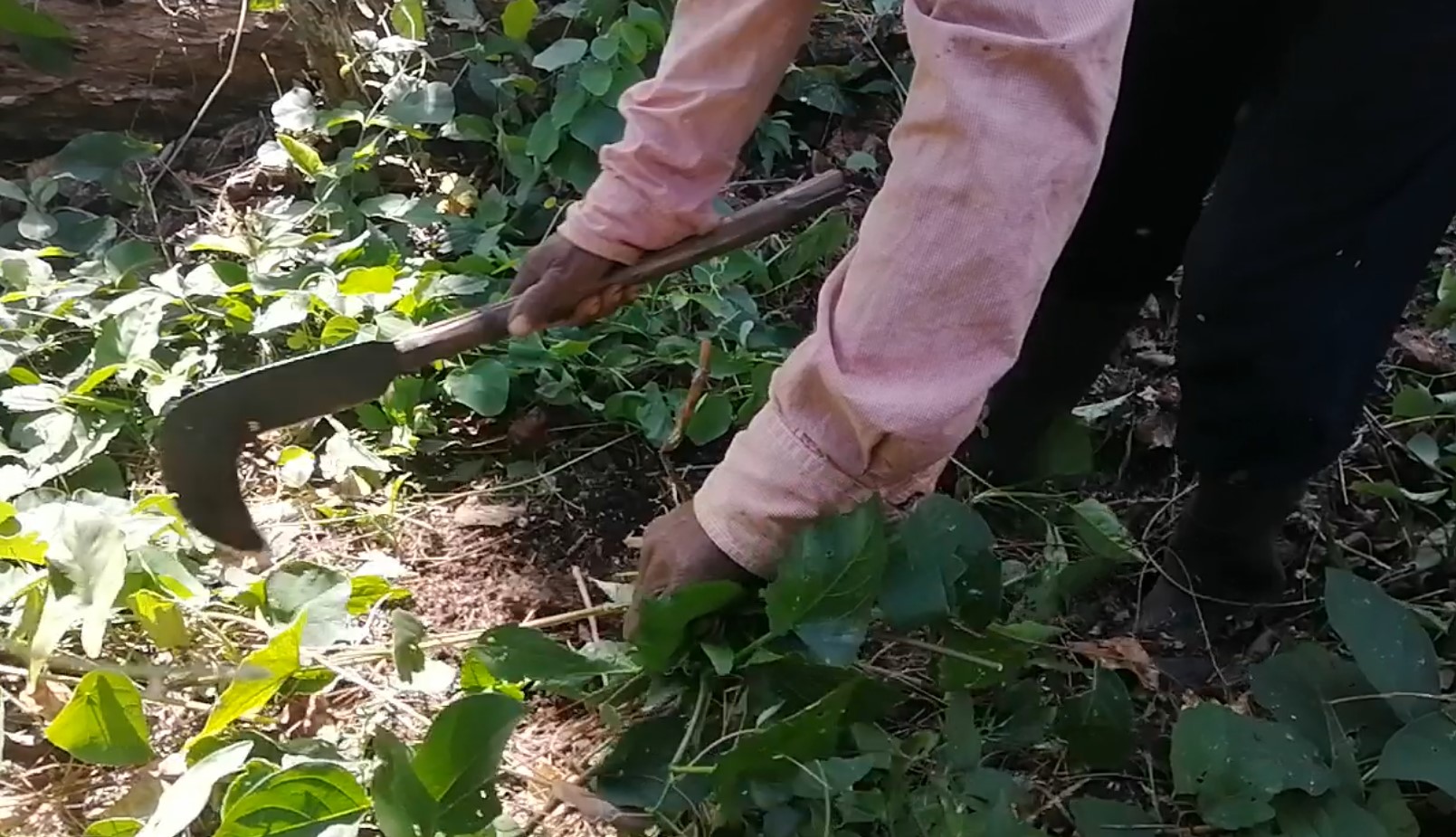Weed Management in a Coffee Plantation – What is chemical weed control in coffee?
Weeds can compete with coffee plants for nutrients, water, and sunlight, reducing crop yields.
Keeping your plantation safe is a year-round task that requires constant monitoring and management to control weeds from maintaining healthy growth, and optimize crop yields.
A cover of grass and weeds on the ground can help to maintain soil temperature by providing insulation and reducing evaporation. However, excessive weed growth can be detrimental to soil health as it can lead to nutrient depletion. Additionally, some types of weeds can be invasive species and outcompete desirable plants for resources. Maintaining a balance and managing weed growth in your lawn or garden is essential to ensure the soil’s health.
The best way to maintain this balance is to carefully observe your land and identify the type of vegetation that grows there. That way, you can determine which might be harmful to your crop. My plantation, for example, has different types of weeds. However, most of them arise from the earth during the rainy season but tend to dry out during the mid-summer. When they do, they provide additional organic matter to the soil, so I have opted to only cut it just before collecting my crop. That allows us to walk freely through the furrows to collect the berries. However, many types of lianas constantly entangle my coffee trees, and if they are not removed, they eventually suffocate and damage them. So, these climbing vines required constant management.

Liana entangled in the sprouts of a pruned coffee tree.
You can resort to cultural, mechanical, manual, or chemical control for the maintenance work of your plantation.
Cultural and biological control requires the use of natural practices to limit the growth of weeds:
- Some farmers use techniques such as reducing planting spacing to create more shade on the ground. A higher crop density can help to inhibit the growth of weeds by reducing the amount of sunlight they receive. However, it is important to note that this can also affect the growth and development of the crop, so it is crucial to find the right balance. Also, fast-growing plants can help to regulate shade when it is necessary.
- Use cover crops for the furrow in between the planting lines of your coffee trees. You can plant legumes such as beans and Arachis pintoi, plants with flowers like Dayflowers (Matlali Commelina), and grass that do not grow too high.
- Although it is not a common practice, some coffee farms allow small animals like Pelibüey sheep to graze in the plantations to keep the grass trimmed. While controlled shepherding could potentially generate additional income for the plantation, it is important to exercise caution as the animals’ manure may contain nematodes harmful to the coffee trees.
Mechanical and manual control basically requires the use of machines or people to remove the harmful weed in the plantation:
- Machines like brush cutters or mowers are very effective in shredding all vegetation surrounding your plants. As they are fast, they save time, and therefore using them requires less workforce, making it viable from an economic point of view. In Robusta farms, Where the planting distance and furrows are wider, tractor-driven mowers are also a reliable option. Keep in mind that mowers are usually designed for trimming. However, as the weeds are not eliminated from their root, they also might regrow fast.
- Manual control using straight and curved machetes and digging tools is a traditional way to eliminate weeds. The advantage of these tools is that they allow for the elimination of weeds from the roots, meaning that the removed vegetation will not grow back. However, it requires more labor and time to carry out. Keep in mind that this does not guarantee permanent weed control. New weeds can also grow from roots or stem fragments left behind after mowing or from seeds carried by the wind.
Chemical control requires the use of herbicides to control the growth and density of weeds. These can be applied by either using a manual or a gas power backpack pump sprayer. They can be classified as:
- Preemergent: These herbicides are applied during the germination stages of weeds, just before they sprout from the soil. The ground must be completely cleared before applying, and rain or moist soil is desirable so that the chemical can be effective.
- Postemergence: Herbicides are applied once the weed has grown to a height of 15cm. If the weed is taller, they are less effective and may require more than one application. These herbicides are classified into two categories: contact or burn herbicides and systemic or translocation herbicides. Contact herbicides work by coming into direct contact with the weed’s foliage and causing the plant to dry out and die. They are most effective when applied to young, actively growing weeds and are typically used for controlling annual weeds. Systemic herbicides work by traveling throughout the plant’s vascular system, including the roots. They are absorbed by the leaves and stems of the weed and then translocated to the rest of the plant, where they interfere with normal growth and development. Both contact and systemic herbicides shouldn’t be applied if it is raining, as the water might wash them away. However, they can be mixed with leaf adherent and absorption agents to ensure they stick to the weed.
- Selective Herbicides: These are used to control specific weeds without harming desirable plants. These herbicides are designed to target certain species of weeds, such as grasses or broadleaf weeds, while leaving desirable crops or plants unharmed.
| Herbicide | Type | Dose |
| Alachlor | Preemergent | 250 cc dissolved in 190 L of water (recommended for coffee nurseries) |
| Oxyfluorfen | Preemergent | 1000 cc per every 7000 m² of land |
| Metsulfuron-methyl | Postemergence, systemic | 10-20 cc per every 7000 m² of land |
| Paraquat | Postemergence, contact | 1L per every 7000 m² of land |
*The above table serves as a guideline and example of some common herbicides that are used in coffee plantations, and before you apply them, I suggest further research, as all country’s regulations or alternatives for these products might vary.
*Always use personal protective equipment for fumigation, like protective clothing, gloves, masks, and goggles to avoid any intoxication.
Which of the above weed management methods should you choose? This depends on the circumstances of your plantation, but generally speaking, coffee producers tend to alternate between all of the methods. In my plantation, for example, I hire manual labor immediately after harvesting to remove lianas manually throughout my whole farm. I do not use brush cutters because the soil of my farm has many rocks, and tractor-driven mowers are also not suitable because the furrows between the trees are not wide enough, and no single area of my land is flat. Furthermore, my use of agroforestry means I have trees scattered throughout my farm that would pose obstacles for tractors. Later in the year, during the rainy season, I sometimes need to opt for chemical control, as at this time of the year, the vegetation grows at a faster pace. For this, I tend to look for approved selective herbicides, and as the years go by, I’m slowly transitioning into organic practices like the use of cultural and biological control.

Use a curved machete to clear and loosen the soil

Pull the roots of the lianas and extract them.
References:
Integrated Weed Management in Coffee for Sustainable Agriculture- A practical Brazilian Approach https://www.intechopen.com/online-first/84965
Weed Management in Coffee, D.A. Odeny, J.M. Minai & J.M. Luusa, Coffee Research Institute No.20017/005 https://www.kalro.org/sites/default/files/Weed-management-in-coffee-Dec2020.pdf
Coffee Weed Management Review in South West Ethiopia, Demalash Teferi, Jimma Research Center, 2018 https://core.ac.uk/download/pdf/234662601.pdf
Coffee plant History and general Information
Coffee Plant Information – Morphology
Coffee Genetics and Variety Selection
How to Select, and Treat Coffee Seeds
Germination of Coffee Seeds and Creation of Seedbeds for Planting
Coffee Trees Planting and Plant Spacing
How to Prune your Coffee Trees in an Agroforestry System
Shade-Grown Coffee in an Agroforestry System
Coffee Tree Flowering and Pollination
From Rainwater Harvesting to Irrigation of Coffee Trees
Coffee Tree Fertilization Requirements
Weed Management in a Coffee Plantation









































































